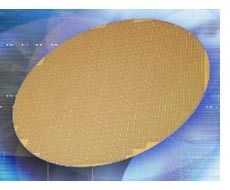Elpida begins production of 90 nm DDR2 memory
Tokyo - Elpida announced it has started production of 90 nm DRAM modules, allowing a smaller chip size and providing room for future speed and capacity increases.
The company is one of the first large manufacturers to introduce the new production process. Shrinking structures usually results foremost in a more economical manufacturing for semiconductor companies. In Elpida's case, the new 512 Mbit chips transitioned from a previous 100 nm now measure just 69.9 mm2, and enable the company to fit substantially more chips on one 300 mm wafer.

90 nm memory is also on the roadmap at other manufacturers. For example, Infineon said it currently prepares a shift in production of its DDR2 modules, down from 110 nm to 90 nm by summer of this year. Samsung announced in August of 2004 it would begin producing DDR2 in 90 nm early in 2005, but has not formally announced the move yet.
Meanwhile, memory companies are ramping up general DDR2 production aggressively with the target to match production and pricing of DDR1 by mid of this year. Consumers are likely to see pricing parity between DDR1 and DDR2 modules starting this summer.
Related stories:
DDR2 prices to match DDR1 by mid year - sources
Stay On the Cutting Edge: Get the Tom's Hardware Newsletter
Join the experts who read Tom's Hardware for the inside track on enthusiast PC tech news — and have for over 25 years. We'll send breaking news and in-depth reviews of CPUs, GPUs, AI, maker hardware and more straight to your inbox.
Most Popular



